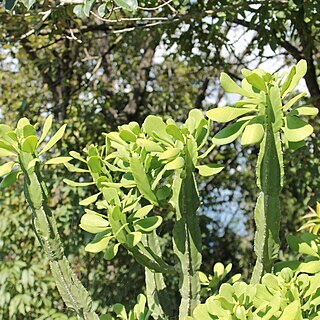A shrub. It grows to 5 m high. The branches are 5-7 angled. They have wavy ridges. The leaves have short stalks. There are a pair of spines at the base. The leaves are fleshy with round tips. They narrow towards the base. The flowers are yellowish. They are in clusters in the axils of leaves.

